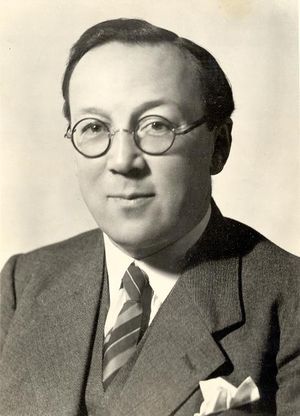Watson-Watt Proposes Radar: Difference between revisions
From ETHW
No edit summary |
(CSV import of Timeline data) |
||
| (One intermediate revision by one other user not shown) | |||
| Line 3: | Line 3: | ||
'''This article is a stub. Please help expand the article by using the edit tab.''' | '''This article is a stub. Please help expand the article by using the edit tab.''' | ||
On 12 February 1935 Robert Watson-Watt sent a memorandum entitled "Detection of aircraft by radio methods", which Hanbury Brown calls "the birth certificate of [[Radar|radar]]." During [[Radar during World War II|World War II]], radar played a pivotal role in the success or failure of many military missions. | On 12 February 1935 [[Robert Watson-Watt|Robert Watson-Watt]] sent a memorandum entitled "Detection of aircraft by radio methods", which Hanbury Brown calls "the birth certificate of [[Radar|radar]]." During [[Radar during World War II|World War II]], radar played a pivotal role in the success or failure of many military missions. | ||
[[Category:Radar]] | [[Category:Radar]] | ||
{{Timeline | |||
|Date=2/12/1935 | |||
|Priority=Electrical | |||
|Description=On 12 February 1935 Robert Watson-Watt sent a memorandum entitled "Detection of aircraft by radio methods", which Hanbury Brown calls "the birth certificate of radar." During World War II, radar played a pivotal role in the success or failure of many military missions. | |||
}} | |||
Latest revision as of 06:47, 23 November 2017
This article is a stub. Please help expand the article by using the edit tab.
On 12 February 1935 Robert Watson-Watt sent a memorandum entitled "Detection of aircraft by radio methods", which Hanbury Brown calls "the birth certificate of radar." During World War II, radar played a pivotal role in the success or failure of many military missions.
